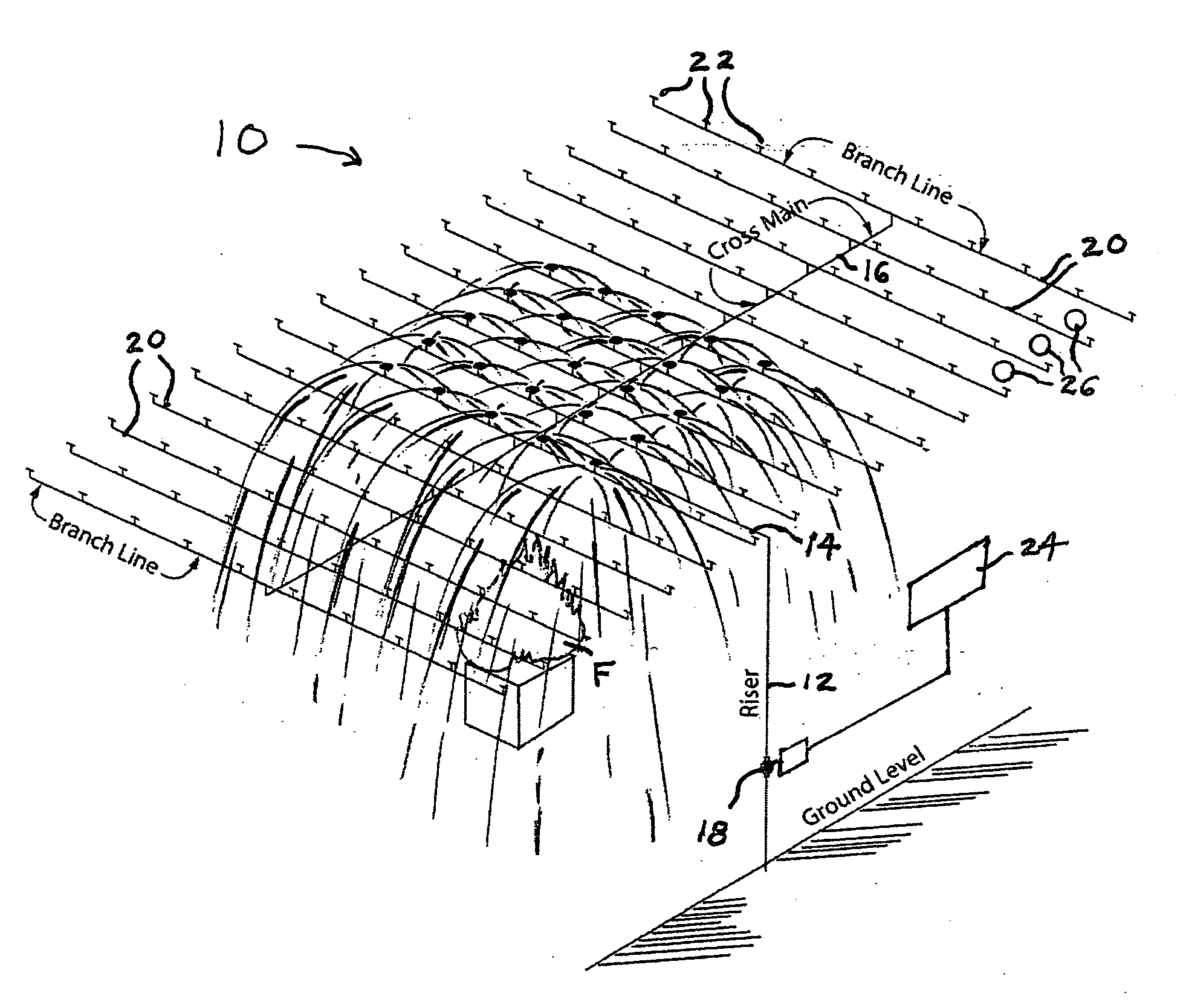Deluge-like sprinkler fire scheme using high thermal sensitivity and high temperature rating sensing elements
a fire scheme and high temperature rating technology, applied in fire rescue, spraying apparatus, etc., can solve the problems of low thermal sensitivity, temporary or permanent delay, high temperature ratings, etc., and achieve the effect of not affecting the effectiveness of the sprinkler system
- Summary
- Abstract
- Description
- Claims
- Application Information
AI Technical Summary
Benefits of technology
Problems solved by technology
Method used
Image
Examples
Embodiment Construction
[0027] As can be seen from the drawing FIGURE a sprinkler system according to the present invention, which is designated generally by the reference numeral 10, is shown in operation controlling a fire. Although its environment is not illustrated, the sprinkler system 10 is typically installed in a building, such as a warehouse, having a ceiling beneath which a hot ceiling gas flows generally horizontally in the event of a fire. The sprinkler system 10 receives water from a water supply (city supply, gravity tank or pump) and includes a system riser pipe 12 feeding a main pipe 14 that in turn feeds cross main pipes 16, a system valve 18 that is typically located in the riser pipe, branch lines 20 fed by the cross main pipes, and sprinklers 22 mounted in the branch lines, as well as accessories. The sprinklers 22 are spaced from one another in an arrangement covering an area extending across at least the area of any fire that might occur.
[0028] Although the present application descri...
PUM
 Login to View More
Login to View More Abstract
Description
Claims
Application Information
 Login to View More
Login to View More - R&D
- Intellectual Property
- Life Sciences
- Materials
- Tech Scout
- Unparalleled Data Quality
- Higher Quality Content
- 60% Fewer Hallucinations
Browse by: Latest US Patents, China's latest patents, Technical Efficacy Thesaurus, Application Domain, Technology Topic, Popular Technical Reports.
© 2025 PatSnap. All rights reserved.Legal|Privacy policy|Modern Slavery Act Transparency Statement|Sitemap|About US| Contact US: help@patsnap.com



